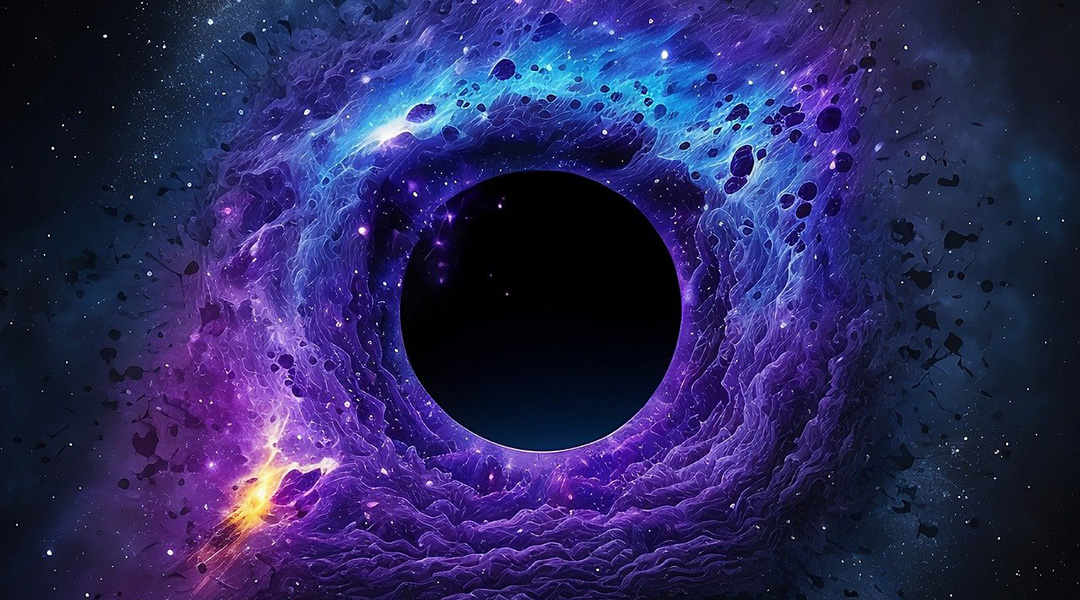According to popular theory, dark matter — a hypothetical entity believed to permeate the Universe — is made up of constituent particles that are many orders of magnitude lighter than any known particle in the Standard Model of Physics.
While this hypothesis helps explain phenomena such as galactic dark matter halos, regions of increased dark matter density surrounding galaxies, it has a fatal flaw arising from probabilistic and quantum effects, particularly quantum tunneling.
Tunneling affects the probability of dark matter particles “jumping” or tunneling from one gravitational potential well to another. Dark matter from smaller satellite galaxies should therefore be steadily migrating to the larger ones they orbit, resulting in the smaller galaxies losing their mass. According to this theory, this should have led to their disappearance.
Tiny interactions make a big difference
In a study, scientists propose that this discrepancy can be reconciled if tiny interactions between dark matter particles that were overlooked in previous studies are taken into account. The rate at which they tunnel out of satellite galaxies may then be dramatically lower, thereby bridging observations with this theory of ultra-light dark matter.
“The mass of the dark matter particle in this model can be as small as 10-58 kg, which is 1028 times lighter than the electron,” Bihag Dave, theoretical physicist at the Ahmedabad University in India and one of the authors of the study, explained in an email. “Using quantum mechanical matter-wave duality, one expects wave-like behavior for such dark matter to show up at galactic scales.”
“At larger scales, ultra-light dark matter behavior resembles the so-called cold dark matter consisting of weakly interacting massive particles, which has, time and again, been very successful at describing the large-scale structure and properties of the universe.
“However, at smaller length scales, cold dark matter theory runs into some issues — like over-predicting the number of satellite galaxies, predicting a steeper density profile at the centers of small halos compared to what is observed and so on. Ultra-light dark matter, due to its wave-like properties, can potentially solve these issues while retaining cold dark matter’s success at larger scales!”
Quantum tunneling occurs when an object passes through a barrier that, according to classical physics, it should not be able to penetrate. Typically, elementary particles can tunnel over atomic scales, meaning in all macroscopic phenomena, such as on a planetary or galactic scale, tunneling can be completely neglected.
However, due to their extremely low mass, hypothetical ultralight dark matter particles should be able to tunnel over vast cosmic distances, allowing them to overcome the gravitational pull of small satellite galaxies and flow into the larger galaxies they orbit.
A start, but future experiments will provide answers
This potential flaw in the ultra-light dark matter theory was highlighted in a study by Abraham Loeb and Mark Herzberg, who computed the rate of the dark matter mass loss by the Fornax satellite galaxy orbiting the Milky Way and concluded that the fact that it still exists should rule out the ultra-light dark matter theory.
But this and previous studies ignored possible interactions occurring between dark matter particles themselves, which could affect the tunneling rate.
“Previous tunneling studies have not taken into account the effect of self-interactions of ultra-light dark matter,” said Dave. “By self-interactions, we mean that when two dark matter particles come into contact with each other, they can either attract or repel each other. In our work, we extend the tunneling method to include attractive and repulsive self-interactions.”
In their study, Dave and his co-author Gaurav Goswami analyzed the effect of these possible interactions on the rate of tunneling from satellite galaxies, and concluded that even if they only slightly attract each other, then the theoretically calculated mass loss of satellite galaxies is consistent with observations.
Although these self interactions could potentially save the theory of ultra-light dark matter (for now), only experiments will provide ultimate proof.
Fortunately, experiments aimed at studying the composition of dark matter are currently underway or in preparation, such as those using gravitational wave detectors, the study of neutrino oscillations, atomic interferometry, and more.
These efforts will hopefully one day shed light on this cosmic enigma.
Reference: Bihag Dave and Gaurav Goswami, ULDM self-interactions, tidal effects and tunneling out of satellite galaxies, Journal of Cosmology and Astroparticle Physics (2024). DOI: 10.1088/1475-7516/2024/02/044
Feature image credit: bjornbrathen on Pixabay

















